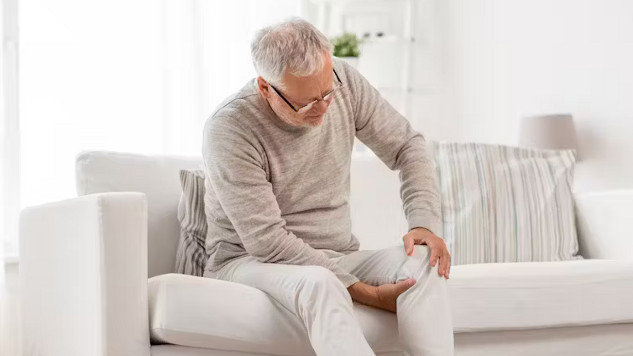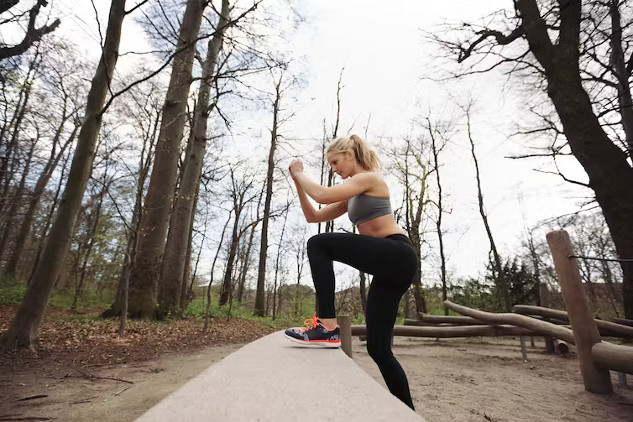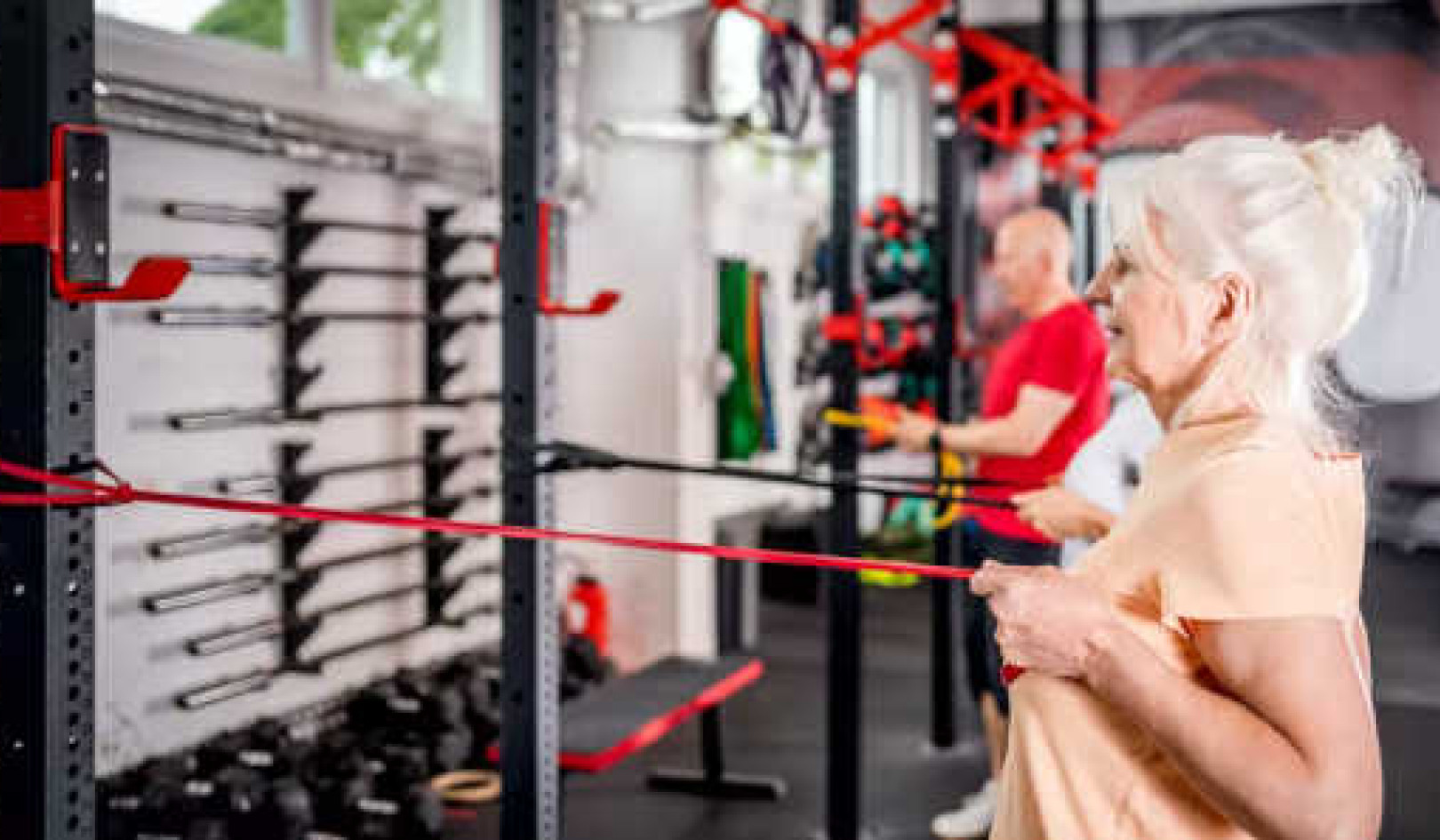
Knee pain can have many causes. Ground Picture/ Shutterstock
Knee pain is a common problem. Global estimates suggest more than one in five people over the age of 40 have a form of chronic knee pain. This is something that can have a big impact on people’s lives, affecting not only how active they are, but also their emotional wellbeing.
But just because knee pain is common doesn’t mean you have to live with it. No matter the cause, tackling knee pain is often relatively straightforward when you know what to do.
Knee pain is often caused by trauma – such as injuring yourself while playing a sport or at work, particularly if it’s manual or strenuous labour. Meniscus tears (damage to the cartilage inside the knee) and ruptured cruciate ligament (which holds the knee together) are some of the most common knee injuries that happen due to trauma. While meniscus tears may heal on their own, torn cruciate ligaments typically require surgery.
In young people, pain at the front of the knee may be related to problems with the tendon that the kneecap (known as the patella) sits in, or issues with the kneecap position (called patellofemoral pain syndrome).
Many young people, especially women, have very stretchy joints (a condition knows as hypermobility), which can lead to pain where tendons attach to joints – including the knee.
After the age of 40 or 50, the most common cause of knee pain is osteoarthritis. Typically, osteoarthritis causes around five to ten minutes of pain and stiffness in the morning. This pain may worsen depending on how active you are throughout the day. Chronic knee pain can also lead to muscle loss, mainly in the thighs. This may make movement more difficult and lead to further tendon and knee problems.
At times, knee pain can also originate elsewhere in the body. For example, hip osteoarthritis or pressure on the lower back’s nerves can also cause knee pain.
In rare cases, a spontaneously swollen and painful knee can happen after infections such as salmonella (called reactive arthritis) or infections within the knee joint (called septic arthritis). People with inflammatory arthritis such as gout or rheumatoid arthritis can have flare-ups that cause knee pain.
Managing pain
The best way of managing knee pain depends on the cause. If you’ve had trauma or your knee is very sore and swollen, it’s important to seek professional advice to ensure you get the right treatment.
But if you experience intermittent or chronic knee pain, here’s what you can do:
1. Keep strong and active: Strengthening the muscles around your knee will noticeably reduce pain and stiffness. If your knees are quite weak, a good way to build strength is to walk laps in a swimming pool. As you get stronger, consider using an exercise bike or cross trainer. It’s normal to get a few additional aches and pains when you begin exercising. This will settle as you build strength
.
The step up exercise can help build knee strength. Jacob Lund/ Shutterstock
If your knee pain is caused by osteoarthritis, you’ll probably get the most benefit from a supervised exercise programme to ensure you’re doing exercises tailored to your needs. Some exercises you might be given to build strength include step ups (stepping onto a step or box and driving your weight up through the elevated leg) and chair squats (squatting backwards until your buttocks touches the chair then immediately rising back into a standing position). It’s important to keep up the exercises in the long-term so that you maintain the benefits.
2. Watch your weight: Being overweight or obese can put extra strain on the knees. Losing weight will help to reduce this pressure and also reduce inflammation.
Any amount of weight loss may improve knee osteoarthritis symptoms. But losing at least 10% of your body weight is recommended – and the more body weight you lose, the more benefits you’ll see.
At the moment, the benefits of weight loss on knee health has only been investigated in people with osteoarthritis.
3. Modify your activities: Some people find pacing their activities (such as doing certain tasks when your knee pain isn’t as bad, or spacing out activities that you know may cause pain), using walking aids or wearing shoes with shock-absorbing soles (such as good trainers) to be useful. But these changes may only make a small difference in managing knee pain.
If you find your knee pain is made worse by your work, you may also want to make some changes to the way you normally do things to help reduce pain. For example, if you sit a lot at work try to get up and move around more often. But if you spend lots of time on your feet, make time to sit down every so often to take the pressure off your joints.
Preventing pain
Most people can successfully manage their knee pain through exercise and other self-management approaches (such as weight loss or stretching), so surgery is not usually needed. But if your knee pain is due to a problem such as a ruptured ligament or advanced osteoarthritis, knee surgery may be recommended.
For people with advanced osteoarthritis, operations such as total knee replacement can lead to big improvements in pain, ability to carry out daily activities and overall wellbeing.
GPs may recommend painkillers in some circumstances – for example if your knee pain is stopping you exercising. However, some of these drugs can have significant side effects with long-term use. For instance, ibuprofen may lead to stomach ulcers.
If you’re hoping to prevent knee pain in the future, the best strategies include staying physically active and maintaining a healthy weight. Keeping the thigh muscles strong will also help support the knees. And, many of these knee-strengthening exercises can be done at home without any equipment – such as the straight-leg raise (sitting in a chair with your back straight and lifting your leg straight up before lowering).![]()
About The Author
Philip Conaghan, Director, Institute of Rheumatic and Musculoskeletal Medicine, University of Leeds; Anna Anderson, Research Fellow in Qualitative Research, University of Leeds, and Hemant Govind Pandit, Professor and Consultant Orthopaedic Surgeon, University of Leeds
This article is republished from The Conversation under a Creative Commons license. Read the original article.
Related Books:
The Body Keeps the Score: Brain Mind and Body in the Healing of Trauma
by Bessel van der Kolk
This book explores the connections between trauma and physical and mental health, offering insights and strategies for healing and recovery.
Click for more info or to order
Breath: The New Science of a Lost Art
by James Nestor
This book explores the science and practice of breathing, offering insights and techniques for improving physical and mental health.
Click for more info or to order
The Plant Paradox: The Hidden Dangers in "Healthy" Foods That Cause Disease and Weight Gain
by Steven R. Gundry
This book explores the links between diet, health, and disease, offering insights and strategies for improving overall health and wellness.
Click for more info or to order
The Immunity Code: The New Paradigm for Real Health and Radical Anti-Aging
by Joel Greene
This book offers a new perspective on health and immunity, drawing on principles of epigenetics and offering insights and strategies for optimizing health and aging.
Click for more info or to order
The Complete Guide to Fasting: Heal Your Body Through Intermittent, Alternate-Day, and Extended Fasting
by Dr. Jason Fung and Jimmy Moore
This book explores the science and practice of fasting offering insights and strategies for improving overall health and wellness.






















